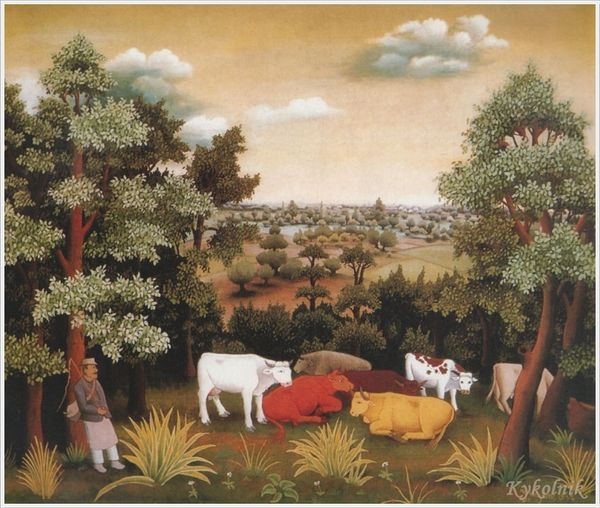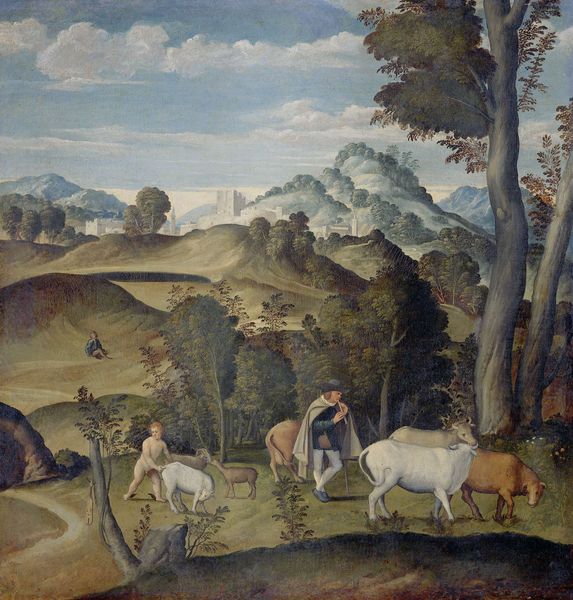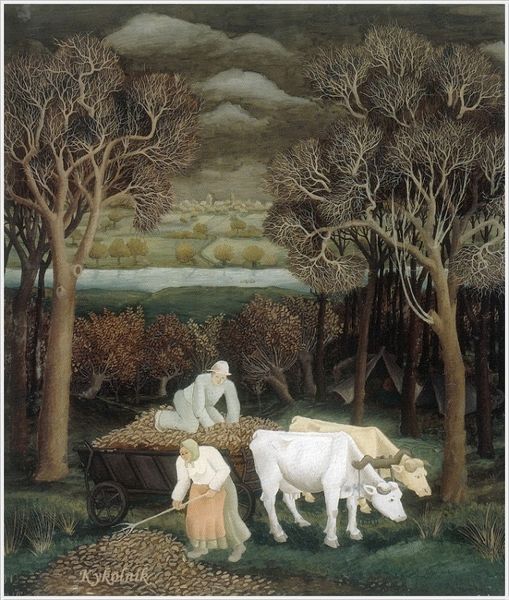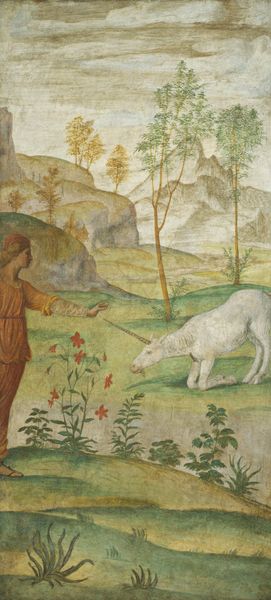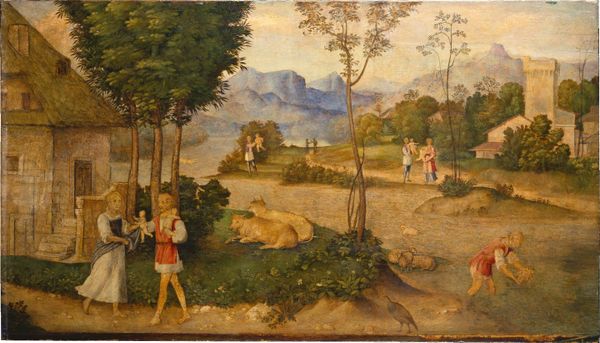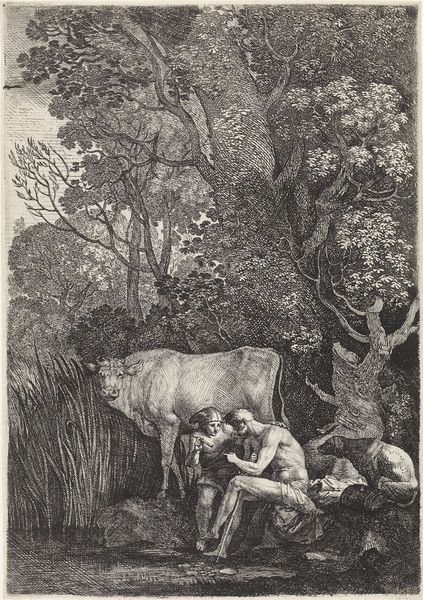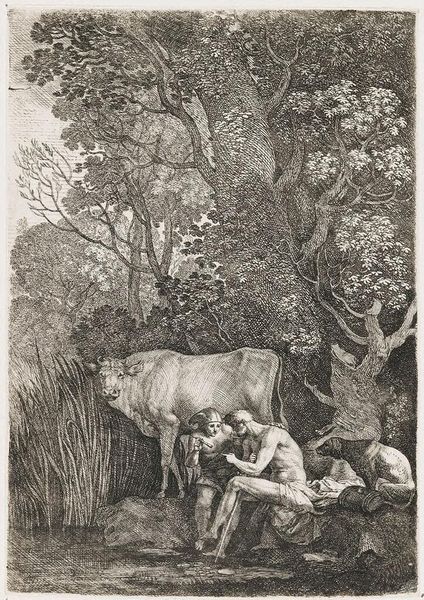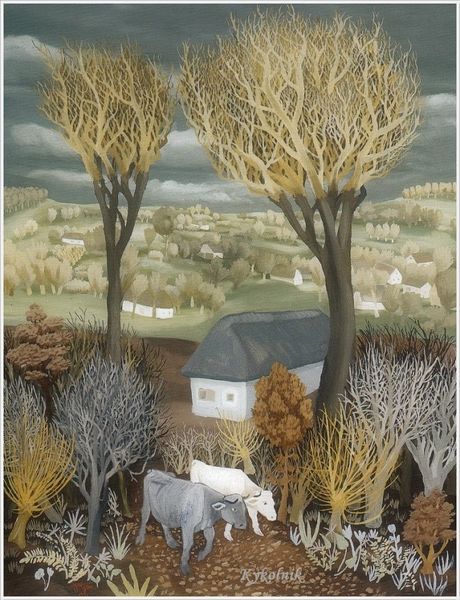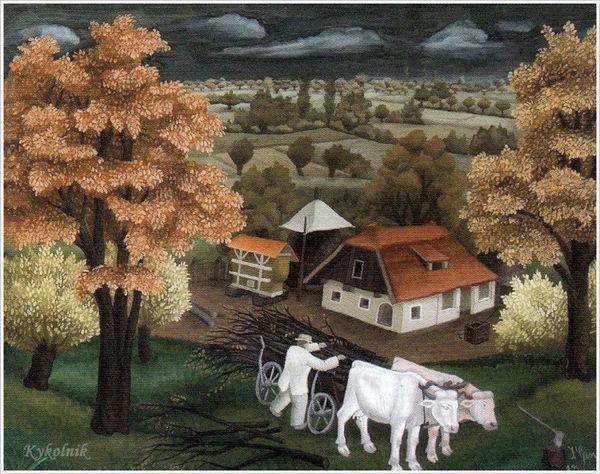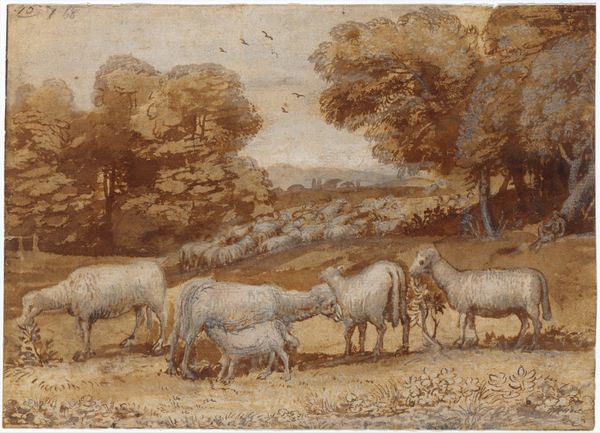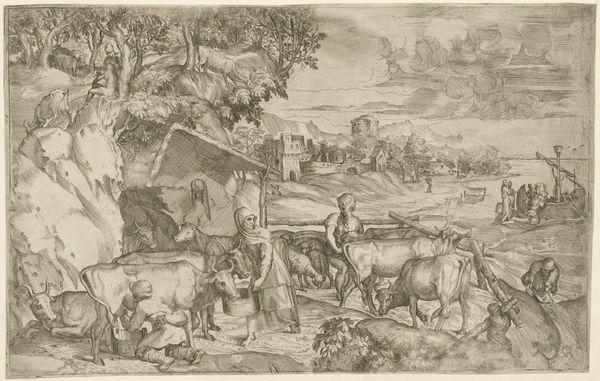
painting, gouache
#
gouache
#
painting
#
gouache
#
landscape
#
genre-painting
#
modernism
#
watercolor
Copyright: Ivan Generalic,Fair Use
Curator: Here we have "Transportation of Hay," a 1943 painting rendered in gouache by Ivan Generalic. What’s your immediate impression? Editor: The muted palette gives it such a melancholic feel, despite the agrarian busyness. There’s a distinct emphasis on labor, rendered with those stolid figures loading the hay. Curator: Exactly, the labor. Generalic, rooted in the rural Podravina region, repeatedly centered the peasant experience. Consider the date, 1943, amidst the turmoil of World War II. This isn’t merely genre painting, it’s a depiction of a community sustaining itself against a backdrop of wider conflict, wouldn't you say? Editor: Certainly. The figures are almost monolithic in their quiet persistence, reflecting both human labor and the cooperative roles of the oxen and rural workers; they’re not individualized portraits but figures embodying physical endurance and community ties. Curator: Look closer at the hay itself – the texture Generalic creates. The sheer physicality, the density of the stack, reminds us of the materiality of this agrarian process, all that effort bound into a consumable product. Editor: Right. And that emphasis complicates a simple reading of 'peasant life.' We can ponder not just what the scene depicts, but *how* it was done – how Generalic's precise technique conveys that tangibility and acknowledges, essentially, the socio-economic cycle within reach of the war. Curator: So we move beyond pastoral nostalgia, engaging with art reflecting a very real, specific cultural and political milieu. It acknowledges history, labor, survival, even under immense pressure. Editor: Agreed. Seeing that interaction between humans, animals, and earth makes the scene intensely evocative, doesn’t it? The landscape transforms through work. Curator: Reflecting on this artwork allows us to re-evaluate and ask whose histories get valued in these rural communities; to explore not just their circumstances, but also the broader socioeconomic contexts shaping these people's identities during crisis. Editor: Thinking about how this work acknowledges those forces is indeed powerful—especially by way of grounding itself in materiality. Thank you for emphasizing such valuable aspects of interpretation!
Comments
No comments
Be the first to comment and join the conversation on the ultimate creative platform.
